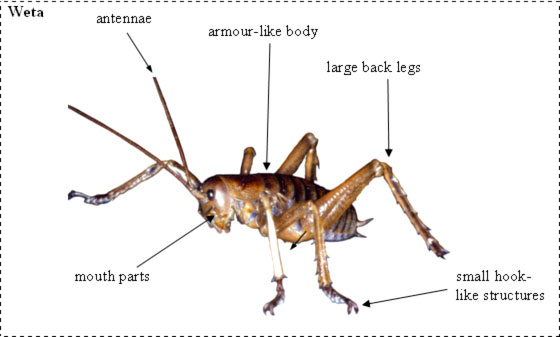Features of mallard ducks and wētā
Instructions:
You will work with a partner.
- One person takes the picture of the duck, the other the wētā.
- Explain to your partner how all the labelled parts of your animal help it to survive in the wild.
- Next, ask your partner to explain how all the labelled parts of the other animal help it to survive in the wild.
- Mark each other's work using the answer guide.


Peer assessment sheet
|
Student assessment marking sheet for the Mallard duck
Name of student: ____________________ Date: __________
Assessment done by: ____________________
My partner clearly explained how each labelled part helps the duck survive. (Tick Yes, No, or Partly).
|
||||||||||||||||||||||||||||||||
|
Answers for mallard duck
|
Peer assessment sheet
|
Student assessment marking sheet for the wētā
Name of student: _______________________ Date: __________
Assessment done by: ____________________
My partner clearly explained how each labelled part helps the wētā survive. (Tick Yes, No, or Partly).
|
||||||||||||||||||||||||||||
|
Answers for wētā
|


